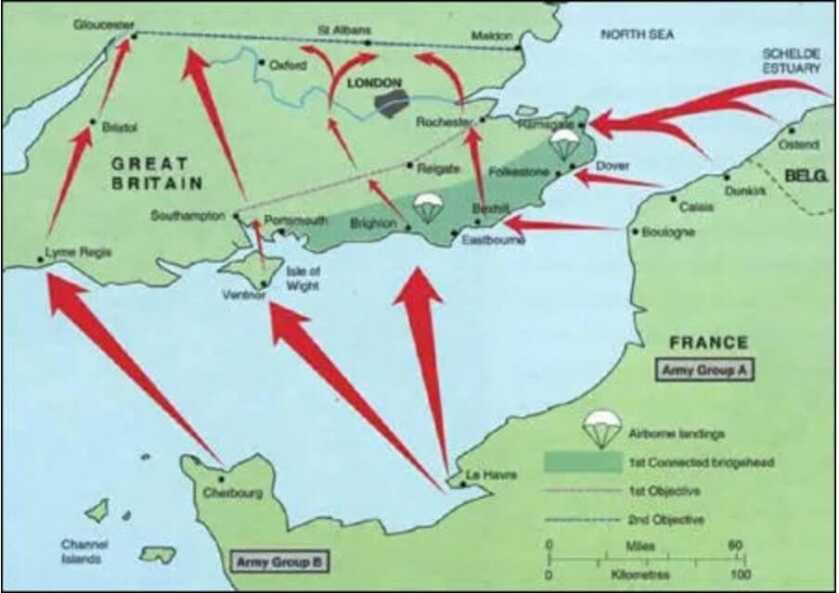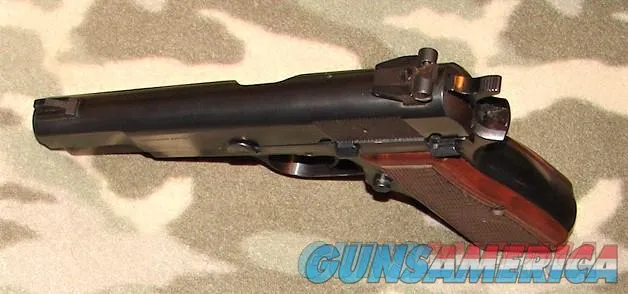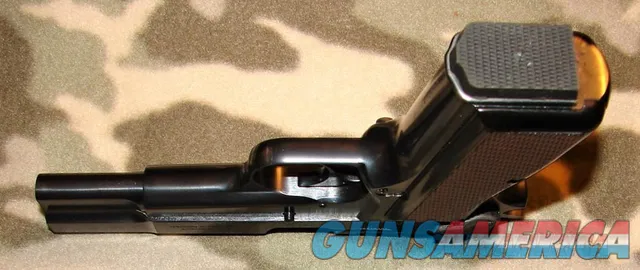
What’s the toughest job you’ve ever known? Being a garbage man has some unique challenges, though those of that profession whom I have known well through work are invariably fit and chipper souls. Nursing in a big urban hospital is arguably the nastiest of human pursuits, but you do at least stand a decent chance of going home alive in the evening.

Colombia is supposedly overrun with hippos nowadays thanks to Pablo Escobar. After he was gunned down like a dog, many of his weird exotic animals escaped into the surrounding countryside. As hippos have no natural predators in Colombia they breed like gigantic aquatic bunnies. You can read about it here.

One of the brilliant solutions proposed to address Colombia’s thorny hippo problem was to catch the males and castrate them. An adult male hippo weighs 4,000 pounds. I don’t know if you go to some special school to become a professional hippo castrator, but that sounds like a pretty craptastic job to me. All that pales, however, in comparison to the plight of Hurricat pilots during the early days of World War 2. Those were some seriously manly guys.
The Setting

It’s tough for us modern folk to imagine what it must have been like to live in England in 1940. The Germans had overrun most of mainland Europe in a matter of weeks. Operation Dynamo had saved much of the British Expeditionary Force from the bloody beaches at Dunkirk, but those that were rescued were mostly bereft of weapons. As Great Britain is a big honking island, she found herself cut off and alone.

Her buddies in America meant well, but to get stuff from the US to the UK meant crossing the U-boat-infested waters of the North Atlantic. The Battle of the Atlantic was the longest single campaign of the war, spanning from September 1939 through May 1945. During that time technological advances in naval combat transformed the battlespace. By the end of the war, fully 75% of German U-boat crews were dead. In 1940, however, the North Atlantic was an unopposed killing ground for these undersea German marauders.

British merchant vessels plied the frigid waters of the North Atlantic far beyond the range of Allied fighter cover. The Royal Navy provided what armed escort they could, but the advantages all fell to the U-boats. Part of that was due to superb coordination and aerial intelligence.

The four-engined German Focke-Wulf Fw-200 Condor had an unrefueled range of nearly 2,000 nautical miles. Operating out of the Bordeaux-Merignac Airport in Western France, these massive patrol planes could range across the northern shipping lanes, vectoring in U-boat wolf packs to their greatest advantage. Without the sorts of escort carriers that would come later in the war, the Allied convoys were powerless to intervene. So long as the Fw-200 crews flew above effective antiaircraft range they could shadow the British vessels with impunity. In addition to coordinating the wolf packs, these Condors dropped bombs from high altitudes as well.

The British realized that they could conceivably lose the war in the absence of a critical lifeline to the United States. In the first half of 1942, the Germans sank 585 Allied ships with a gross weight of more than 3 million tons. Without the war material flowing out of American factories, the British would be unable to resist the German amphibious invasion when it came. The Germans had dubbed this massive proposed undertaking Operation Sea Lion, and they were rabid to get it done. Amidst such dire straits, the Brits took drastic action.
The Solution

The answer, such as it was, seemed to be the CAM ship. CAM stood for Catapult Aircraft Merchant ship, and it represented a bold move indeed. CAM ships began as otherwise unremarkable British merchant vessels. The proof of concept was undertaken via five Royal Navy vessels titled Fighter Catapult Ships. These vessels were crewed by uniformed Navy personnel. The CAM ships, however, still retained civilian Merchant Navy crews.

The British ordered fifty catapult sets for installation aboard merchant vessels. Each catapult consisted of a rail assembly upon which a Hawker Hurricane Mk IA fighter might be arrayed. The Condors were slow lumbering machines that were ready prey for a fast fighter plane like the Hurricane. Once an enemy aircraft was sighted and the crew and pilot were in agreement, the Hurricane was flung into the air via rockets. The Hurricane pilot then had his full fuel load to sow as much mischief as he could. When his gas ran low, however, the best he could hope for would be to parachute or ditch near an escort ship. If all worked as advertised he would be picked up, dried off, and ready to do it all over again on the next trip. However, these were the dark, cold, foreboding waters of the North Atlantic. There’s a lot of stuff that could go wrong with that plan.

The administrative organization was titled the MSFU or Merchant Ship Fighter Unit. All the pilots were volunteers, which was clearly insane. The crews consisted of one pilot, an FDO (Fighter Direction Officer), one fitter, one rigger, one radio-telephone operator, and a seaman torpedo man whose job it was to service the catapult itself. The airplane was considered disposable.

Believe it or not, this insane gimmick actually worked. After meeting success in the North Atlantic these vessels were deployed on runs to Gibraltar and Freetown as well as on Arctic convoys to Archangelsk. Russian missions took along two pilots, while all others used only one per plane. Once within range of their arrival destinations the pilots typically launched their aircraft and landed at handy airfields near the destination port to service their machines and get in a little flight time. Pilots rotated out of the duty after two round-trip voyages simply because the lack of flight time left them rusty. The RAF established modest maintenance facilities on both ends to support the airplanes in such harsh environments.
The Aircraft

The Hawker Hurricane was developed eight months before the more elegant and more familiar Supermarine Spitfire. Those early Hurricanes sported a hybrid fuselage structure built from steel, aluminum, and wood covered in doped fabric. Early wings were wood covered in fabric, while later versions were all metal. The metal wings were rated 80 mph faster than the cloth sort.

Those early Hurricanes sported eight .303 Browning machine guns in the wings. These Brownings were adapted to fire from the open bolt. In practice, the outermost guns tended to freeze up at high altitudes due to a toxic combination of the cold combined with dirty cordite propellant used in British cartridges. As a result, ground crews would dope on a layer of red fabric over the muzzle ports between missions. A Hurricane returning to base with tattered muzzle covers had obviously seen action. Mk IA Hurricanes adapted to the CAM ship mission were called Hurricats or Catafighters.
The Missions

During the course of the CAM ship missions, there were ten combat launches. These ten missions accounted for a total of nine German aircraft destroyed. These remarkable RAF Hurricane pilots bagged four Fw-200 Condors, four Heinkel He-111’s, and a Junkers Ju-88. They also damaged a tenth aircraft and caused another three to flee.

Of these ten launches, two of the planes were within range of airfields ashore and were safely recovered. Flight Officer JB Kendal launched from the SS Empire Morn on April 26, 1942, and successfully downed a Ju-88 while chasing away a Blohm and Voss BV 138. However, when he tried to bail out of his aircraft he was struck by some piece of the plane and killed. Miraculously, every other pilot who launched and then bailed out or ditched actually survived. Flight Officer Taylor very nearly drowned during his mission on November 1, 1942, but once he dried out he returned to active service. Considering the risks associated with these particularly perilous missions, I find the fact that there was but a single casualty among the Hurricat pilots strains credulity. It’s just amazing that it actually worked.
The Rest of the Story

Of the thirty-five converted CAM ships, twelve of them were sunk during the course of 170 round-trip voyages. CAM ship support was discontinued on Russian and North American missions in the summer of 1942. The planes and equipment remained in use on the southern runs for another year. Once US escort carriers came online they provided fairly safe and responsive air support that could travel with the convoys. This, combined with long-range American heavy bombers used in anti-submarine roles and the breaking of the Enigma codes, was the beginning of the end for the German U-boat menace in the North Atlantic.


The American industrial behemoth that awakened for World War 2 was without precedent. There has never been anything like it before or since. The US entered 1942 with eight aircraft carriers. We stopped building capital ships by D-Day in the summer of 1944. By then we had 111 aircraft carriers of all types in service. The war was lost for the Axis as soon as the first bomb was dropped on Pearl Harbor. It just took a great deal of time and suffering to work out the details.

There really is no limit to what young men will do for a good cause. At a time when bombs rained down on their homes and loved ones, a few unimaginably brave RAF pilots strapped into their Hurricanes and blasted off over the North Atlantic with the full knowledge that their missions would end with them bobbing around in the dark frigid waters hoping and praying they wouldn’t be lost. Such incredible bravery quite literally boggles the mind.
*** Buy and Sell on GunsAmerica! ***












I love WWII stories. I knew some of those guys who fought. We all seemed to take them for granted, though. Big mistake. I believe stopping the U-Boat onslaught was the turning point of the war. Stay safe.
Note the article says that Mark 1 Hurricanes were used. This was the first version of the Hurricane, used before the war and into the Battle of Britain. By the time this program was started front line RAF units had already moved on to more advanced versions of the Hurricane. One of the reasons the British were willing to let these Mark 1 Hurricanes be “disposable” was that they were typically considered to be “war weary” aircraft that were on their last legs. It took bravery to be a CAM ship pilot, but even more so to fly in a worn out aircraft that was no longer good enough for frontline service.
Thanks, Will. I Never knew the early Hurricanes had “rag” wings. Reminds me of the ’46 model Cessna 120 I used to own. It too, was a rag wing. MOST fortunately… the prior owner had recovered the wings with Ceconite and modern polyurethane-type dope during a complete “spinner to tailwheel restoration”. The plane looked, and flew like a new one! Though based in Mississippi, I went all over the place in that little bird, including a trip to the UP of Michigan.
Eventually had to sell it, and most UN-fortunately… the new owner (retired airline pilot) ended up totaling it a few years later during a flight review. The NTSB report didn’t state conclusively why the engine experienced a loss of power, but did mention that conditions were favorable for carburetor icing.
That’s a real shame… Not too many of those old birds left.
I can’t say whether or not I would have volunteered for such a thing.
The idea of ditching in such frigid waters is almost unimaginable, And I was on the swim team in H.S. and am scuba rated.
‘Ol Churchill had it right when he praised them.
Much thanks, Will. The book “The Submarine” (Thomas Parrish) goes into great detail of the wolfpacks “Happy Times” and the Murmansk runs. I don’t recall any mention of the Condors or the CAM’s. The lives and equipment losses were catastrophic. The shear bravery of the merchant marine crews must be appreciated and remembered.
-former Bubblehead